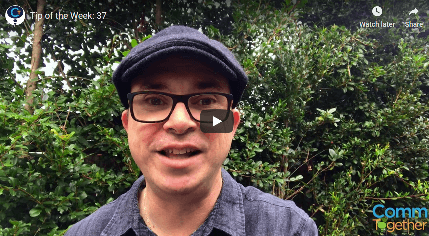
My experience has been that often people take a dim view professionally of the not-for-profit / NFP/ non-profit / charity (take your pick as to which term you prefer) sector. People tend to think that because of the not-for-profit tag it means the level of expertise is not as good as the commercial sector, that the people who work there are not at the same professional level. This is simply not true and more to the point it should never be the case.
This dim view of the NFP sector does not only come from the corporate and business world, it comes from within the sector itself. There are many people who have spent their entire working career in the sector who remember a time when it was seen as necessary for charities to look like they were not spending money. So for example, the newsletters where in black and white, printed internally and with little if any design input. While there may be some elderly donors who still form this opinion, because their perception is any money not spent on providing a service represents wastage, this again is not the reality of charities today.
Charities must compete in the marketplace to survive. To do that, communications and marketing play a critical role as does the level of service they offer their community.
People want quality professional service. Whether the organisation is a not-for-profit or profitable entity is not relevant – the level of service is. To provide this level of service means listening to the market and responding continuously. This is basic communications and marketing. It means providing the best possible service model whether it is being pitched at people who can not pay (e.g. people on the street) or people who have some capacity to pay (e.g. in the disability sector where parents may be able to afford something to give their child the best possible opportunities). To survive, because there is a market for the service and therefore to survive by attracting funding means a level of professional quality service must exist regardless of the profit status.
There are many perfect examples of non-profit organisations completing with for-profits. Take a look at the health funds where privately funded organisations compete with not-for-profits. From my previous experience I am very familiar with the autism community where there are privately run organisations who command large fees from parents right through to not-for-profit organisations who charge only enough to stay afloat. For both to survive they must attract the highest level of professional service providers and they must actively communicate with their audience.
The problem I have found is that far too often the communication and marketing side is still operating under the old beliefs. Communication and Marketing staff operate on small budgets as a general rule, which is ok because their primary focus is about delivering services. But it should not mean, the level of professional expertise in communications and marketing should be any less. The not-for-profit sector is failing to capitalise on the strength of the sector, they can be united. There are very few of these organisations which are really competing with one another. There is a myth that they compete for fundraising dollars, because in reality people give to an organisation they have a connection with, not because the advertising is any better.
CommTogether has been established to show the not-profit-sector it can afford high quality professional communication and marketing expertise. By working for multiple organisations and not just being part of a Communications department for one place, CommTogether can offer a more affordable approach. They can pick and choose the services they require. CommTogether is not about the day-to-day communications, that must be done internally as a shared responsibility by all staff, but it can make an impact on things like strategy, coordinating service to produce materials (like brochures, newsletters, reports, websites and intranets), mentoring, generating ideas, media, crisis management etc.
The not-for-profit sector is not and should never be the poorer cousin of the commercial world. CommTogether is seeking to ensure the gap that currently exists in communications and marketing for many is closed.
I welcome any feedback on your perceptions of the not-for-profit sector.
